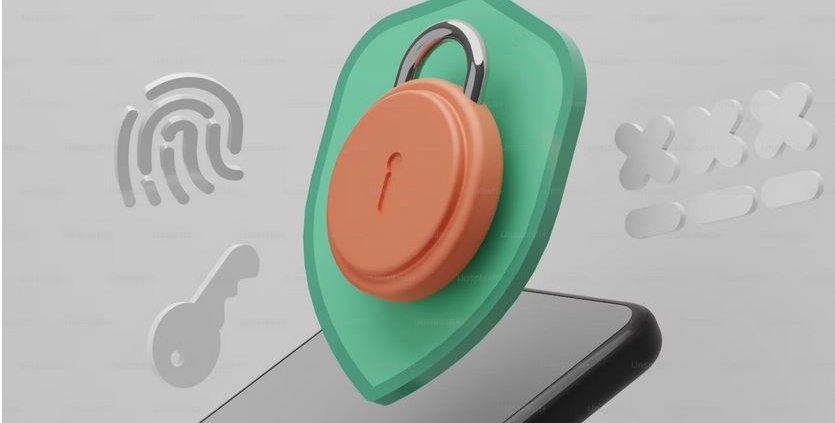iOS App Security Best Practices (2024 Guide)
In the ever-changing digital landscape, iOS app security has never been more crucial. With the increasing reliance on mobile applications for many things ranging from healthcare to financial transactions, the potential risks associated with potential breaches continue to grow exponentially. In 2024 especially, app security is growing by depth and sophistication. Attackers used the latest technologies and exploited vulnerabilities. The consequences of security breaches can be catastrophic. They can range from financial losses and reputational damage to user trust and legal repercussions.
iOS App Best Security Practices
Overview of IOS Security Features: Introduction to Built-in IOS Security Features
Apple’s iOS operating system is renowned for its strong and impenetrable security infrastructure. The operating system is specifically designed to protect users against outside and inside vulnerabilities. This section of the article describes some of the built-in security features that make iOS a preferred platform for safe and secure mobile applications:
- Sandboxing: Apple uses sandboxing, a unique capability that allows each app to operate separately and in isolation from other apps. In case one app is affected, it prevents malicious apps from accessing other apps or affecting them.
- Data protection API: iOS uses encrypted data to ensure that any consumer or user data is inaccessible without the user’s password or authentication.
- App Transport Security (ATS): This feature enforces secure connections between the app and its servers using HTTPs which in turn prevents and protects data in transit from tampering or interception.
- Keychain Services: Provides a secure way to store sensitive information such as passwords and cryptographic keys, ensuring that only authorized apps have access to this sensitive data.
- Face ID and Touch ID: Biometric authentication mechanisms offer a secure and safe way for user authentication and authorization within the app.
- Secure Enclave: iOS uses a secure enclave which is essentially a dedicated coprocessor designed to handle cryptographic operations, thus ensuring the security and confidentiality of sensitive information.
These steps help provide better app security, leading to the reliability of apps without the worry of unauthorized access of breach of confidential information, including personally-identifying information.
Secure Coding Practices
Input validation and sanitization: preventing injection attacks
Input validation and sanitization are crucial defenses against injection attacks, such as cross-site scripting (XSS) and injection attacks. Ensuring that all user inputs are properly validated and sanitized is crucial in preventing malicious data from being processed by iOS apps. Input validation and sanitization may involve checking input lengths, formats, time, and ranges and escaping or completely removing potentially harmful characters.
Avoid hard-coded secrets: using secure volts and environment variables
Using hard-coded secrets like passwords, API keys, and cryptographic keys into the app’s source code is a risky move. It can lead to a breach if the code is exposed to an unauthorized third-party. Instead, it’s advisable for developers to use environment variables or secure vaults to store such sensitive information. Tools like AWS secret manager, Apple’s keychain services, and Azure Key Vault provide secure storage solutions. These solutions keep secrets outside the codebase and make them only accessible to authorized parties.
Secure API usage: Using https and handling API keys securely
Securing API usage is crucial for protecting data in transit and at rest and ensuring the integrity and confidentiality between the app and back-end servers. Using https is an essential step of protecting data sent over a given network. It protects it against tampering and interceptions by unauthorized third-parties. In addition, API keys must be managed securely. Avoid embedding them in the app’s code or storing them in insecure locations. Instead, use secure storage mechanisms and ensure API keys are rotated to minimize the risk of unauthorized access.
Regular code reviews and audits: importance of peer reviews and automated tools
Regular code reviews and code audits are crucial requirements for ensuring high security standards throughout the app’s lifecycle development. Peer reviews involve other developers examining the code to identify flaws, bugs, and incompliance with security standards. This collaborative approach ensures identification of issues that individual developers might miss. Besides manual reviews, automated tools may help to scan the code for vulnerabilities. It may also help enforce coding standards and checking for common security issues. Tools like static application security testing SAST and dynamic application security testing DAST automate the identification of security flaws.
Authentication and Authorization
Implementing biometric authentication: using face ID and touch ID
Biometric authentication leverages unique physiological features of humans. These features include: facial expressions for the face ID and fingerprints for the touch ID. Physiological features are used to provide a highly secure and convenient way of authentication. Implementing these features in iOS provides a safer app experience as it ensures that only authorized personnel of these apps can access specific information or features. For instance, Apple’s Local Authentication framework simplifies the integration of biometric authentication in apps. This allows developers to easily prompt their target users for either face ID or touch ID when using the app.
OAuth and OpenID Connect: secure authentication protocols
OAuth and OpenID are industry-standard protocols for secure authentication and authorization. The former provides a protocol for delegated access. It allows app users to grant third-party apps access to only a limited access to their resources without accessing crucial and sensitive information. On the other hand, Open ID Connect which is built on top of OAuth 2.0 adds a layer of protection which is an identity layer. This allows the app to verify the identity of the user by looking at their basic profile information. Implementing these protocols ensures that authentication processes are secure and robust, thus reducing the risk of credential theft and unauthorized access.
Role-based access control: managing user permissions effectively
Role-based access control (RBAC) is a popular mechanism of managing user permissions effectively in an app. With RBAC, access rights are granted based on the roles assigned to individual users. This ensures that users have only information and access rights for their roles. This role-based access control minimizes the risk of unauthorized access to protected or sensitive information. Implementing RBAC means effectively defining roles and permissions and enforcing them throughout the app’s security policy. For instance, in an e-commerce app, users may include: vendors, administrators, and users with roles and permissions granted according to each person’s needs. By effectively managing user permissions, developers can ensure that the principle of least privilege is enforced. This helps enhance overall security.
Data Encryption
End-to-end encryption: protecting data during transmission
End-to-end encryption (E2EE) is a crucial step of protecting data during transmission as it’s moving from the sender to the recipient. This encryption ensures that only the communicating persons can read the messages being transmitted. In the context of iOS, implementing end-to-end encryption means that information moving from the app to the backend servers is fully encrypted. This is done so that even if it’s intercepted, unauthorized users cannot decode the message. This is usually achieved through robust encryption protocols such as Transport Layer Security. By enforcing E2EE developers can ensure that sensitive information like personal names and financial transactions are protected against intrusion or third-party unauthorized access.
Encrypting sensitive data: best practices for data at rest
Encrypting data is a crucial step of protecting and safeguarding information stored inside a device. This includes: user data, application information, and any other piece of information or data that shouldn’t be accessed by unauthorized users. Best methods of protecting data at rest involve using robust encryption protocols such as Advanced Encryption Standard AES and using the built-in encryption features of IOS. Apple provides robust encryption protocols. These protocols include: data protection APIs that help developers specify different levels of data protection standards based on the sensitivity of data. This means that even if the device is stolen or lost, it doesn’t release sensitive information without correct authentication credentials.
Using iOS crypto libraries: using commoncrypto and security framework
iOS provides robust and scalable crypto libraries such as commoncrypto and security frameworks. These frameworks help developers with encryption, decryption, and common cryptographic operations within their applications. For instance, commoncrypto contains a wide range of cryptographic functions, including hash functions, symmetric key encryption, and HMAC (hash-based message authentication code). On the other hand, the security framework extends these capabilities by providing high-level functionalities for certifications, secure storage, and managing keys. By using these encryptions, developers can leverage different encryption schemes that are tailored to their app’s functionality.
Secure Data Storage
Keychain for sensitive data: storing data and tokens securely
The iOS keychain is a secure storage service provided by Apple. It is designed to store small quantities of sensitive information such as tokens, passwords, and cryptographic keys. It’s highly advisable to use the iOS keychain to store sensitive information as it’s considered highly robust and well-secure. Its robust security features include: automatic management of permission-based controls and hardware-backed encryption. Data stored on the chain is only accessible through a key stored in the app. This key ensures that even if the device is compromised, the data remains safe and secure. The keychain further entails sharing credentials across multiple apps developed by the same team. This enhances seamless collaborations and teamwork.
Core data and SQLite encryption: encrypting databases within the app
For applications that require storing large amounts of data, SQLite and Core data are the mostly used databases in the iOS ecosystem. However, storing data in these applications without encryption can potentially expose your data to unauthorized access if your device is compromised. To mitigate this risk, developers should encrypt their Core data and SQLite databases. One approach of doing this is by using SQLCipher which provides transparent encryption for SQLite databases. By encrypting database files, developers can ensure that even if the hardware is compromised or the physical devices accessed without permission, the data remains secure. This encryption must be coupled with secure key management practices like storing IOS keys in the iOS keychain.
NSFileProtection: protecting files stored by the app
The NSFileProtection is a feature provided by Apple that allows developers to specify different levels of security for files stored in their apps. By applying appropriate NSFileProtection attributes, developers can decide when files can be accessed depending on the phone’s lock state. The most secure option is the ‘NSFileProtectionComplete’ which ensures that all files are inaccessible when the device is locked. This means that even if the device is lost or stolen, the stored files cannot be accessed without the correct authentication credentials. The user will have to authorize their files to be accessed. Using NSFileProtection ensures that all files are protected such as cached data, configuration files, and user documents.
Network Security
App Transport Security ATS compliance: ensuring all connections are secure
App Transport Security is a feature introduced by Apple to enforce secure connections when information is transmitted from the app to backend servers. The ATS requires that all apps use HTTPS instead of HTTP to ensure that all data is encrypted during transmission. This form of end-to-end encryption prevents eavesdropping, interceptions, tampering, and any forms of interception. To fully comply with ATS, developers must ensure their servers are compatible with or support TLS 1.2. ATS compliance is mandatory for apps distributed throughout the App Store, making it a crucial aspect of network security.
Certificate pinning: prevent man-in-the-middle attacks
Certificate pinning is a security technique that prevents man-in-the-middle (MITM) attacks by associating a specific server’s certificate with the app. This means that the app only recognizes and trusts the server’s certificate. Any attempts to intercept or spoof the communication with a forged certificate will result in detection and blockage. Implementing certificate pinning involves embedding the server’s public certificate within the app and comparing it to the server’s certificate during each connection. If the certificates do not match, the connection is disconnected. It’s important to note that while certificate pinning adds a lot of advantages and benefits, it needs careful management. This is so especially during certificate renewal to avoid unnecessary network disruption or interruptions.
Secure socket layer and transport layer security: importance of updating security protocols
Secure socket layer (SSL) and its successor transport layer security (TLS) protocol are security protocols designed to protect data transmitted over large networks. Leveraging advanced versions of these protocols is crucial for protecting against known vulnerabilities and ensuring robust encryption. TLS 1.2 and TLS 1.3 are the latest standards. They offer better security features than the older versions SSL 3.0 and TLS 1.0. Developers must configure their servers to use the latest protocols, TLS 2.0 or TLS 3.0 and disable outdated versions. This upgrading or reconfiguring ensures the app’s data transmissmission are protected by strong encryption algorithms. It also ensures resilience against modern attack vectors.
NS804 – Bringing Mobile App Security in iOS Apps
NS804 is a leader in custom mobile apps, specializing in both Android and iOS applications. With ever-changing preferences surrounding mobile app security, NS804 understands that designing a secure app is key to succeeding in the current business landscape. Whether you’re a healthcare organization, an educational institution, an e-commerce platform, or a fintech firm, security supersedes every other priority or feature your app possesses. This is why we believe in designing secure mobile apps that safeguard against sensitive information like personally-identifying information and protected health information.

 https://unsplash.com/photos/a-cell-phone-with-a-lock-on-it-BranUoqv1k0
https://unsplash.com/photos/a-cell-phone-with-a-lock-on-it-BranUoqv1k0
 https://unsplash.com/photos/9e9PD9blAto
https://unsplash.com/photos/9e9PD9blAto  https://unsplash.com/photos/HfWA-Axq6Ek
https://unsplash.com/photos/HfWA-Axq6Ek
Leave a Reply
Want to join the discussion?Feel free to contribute!